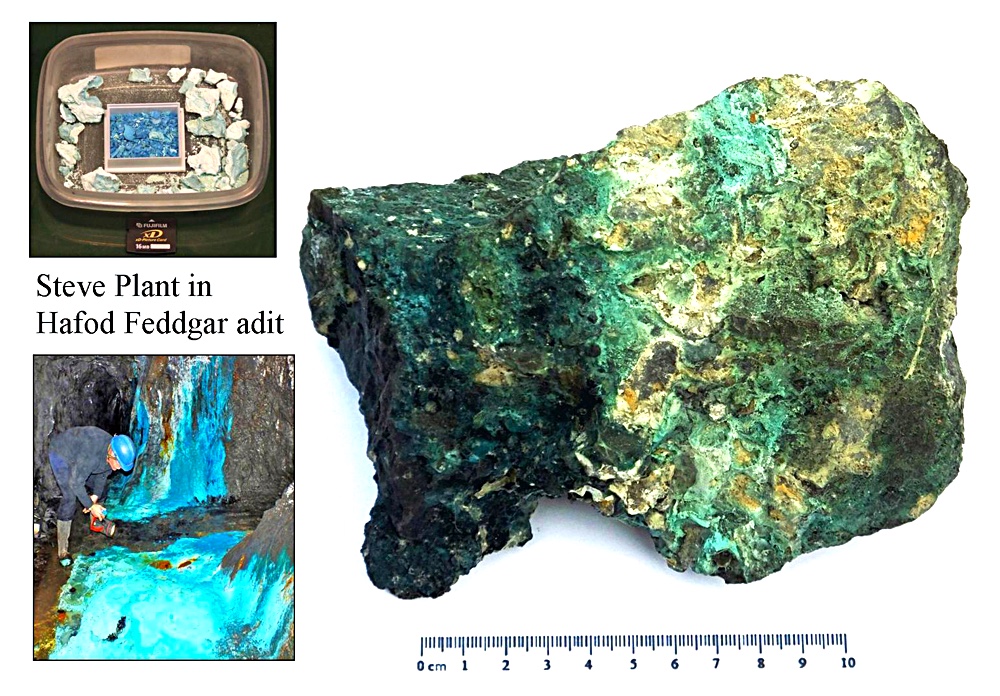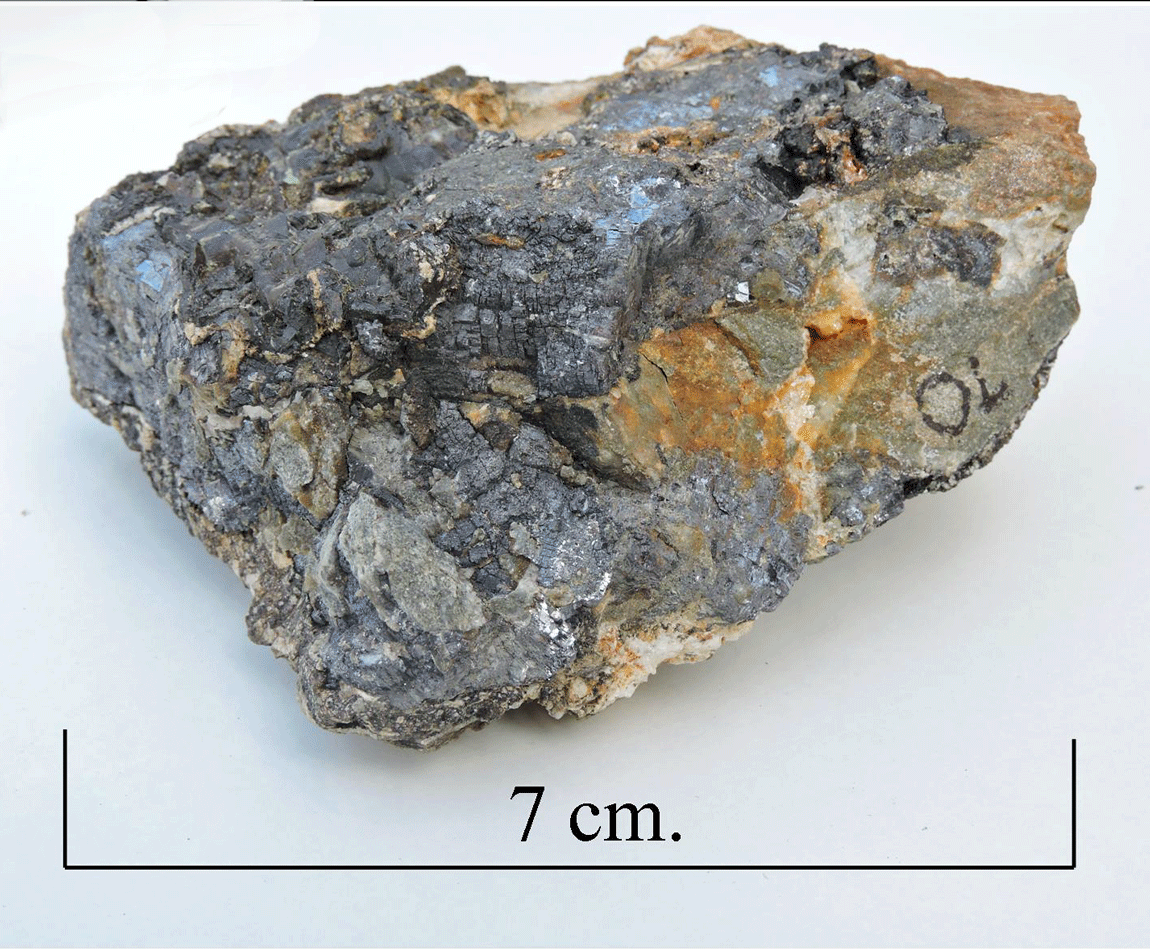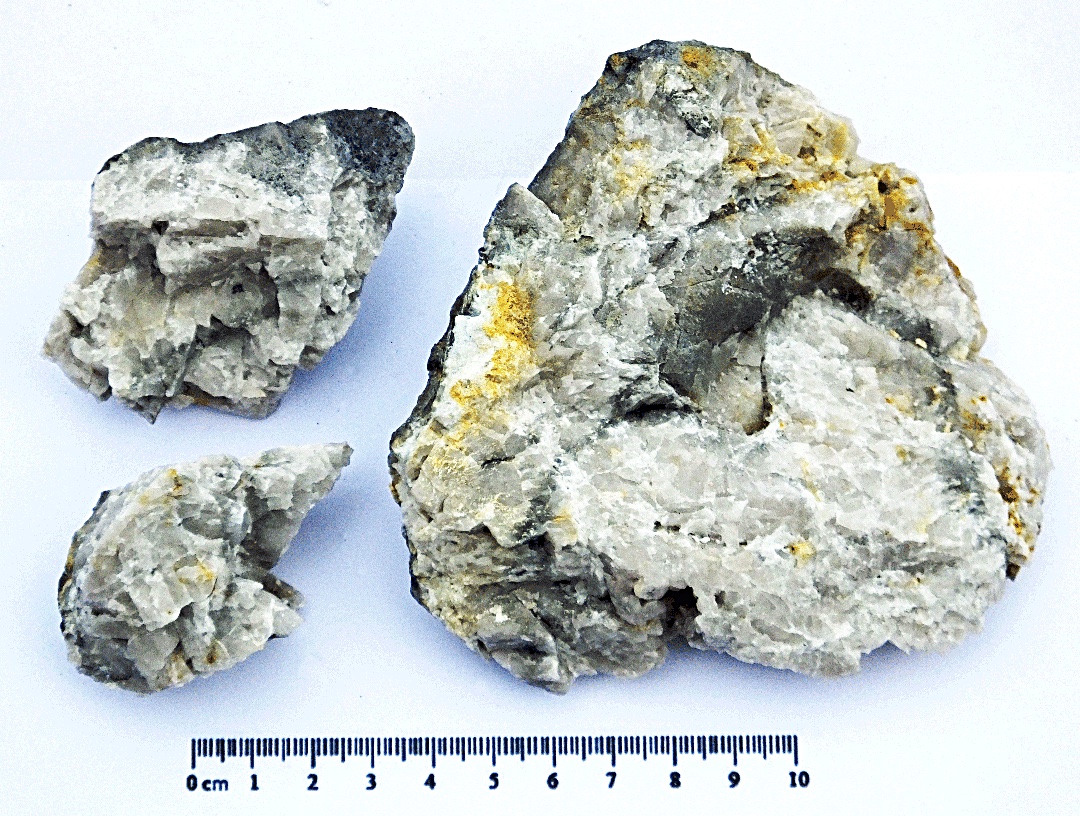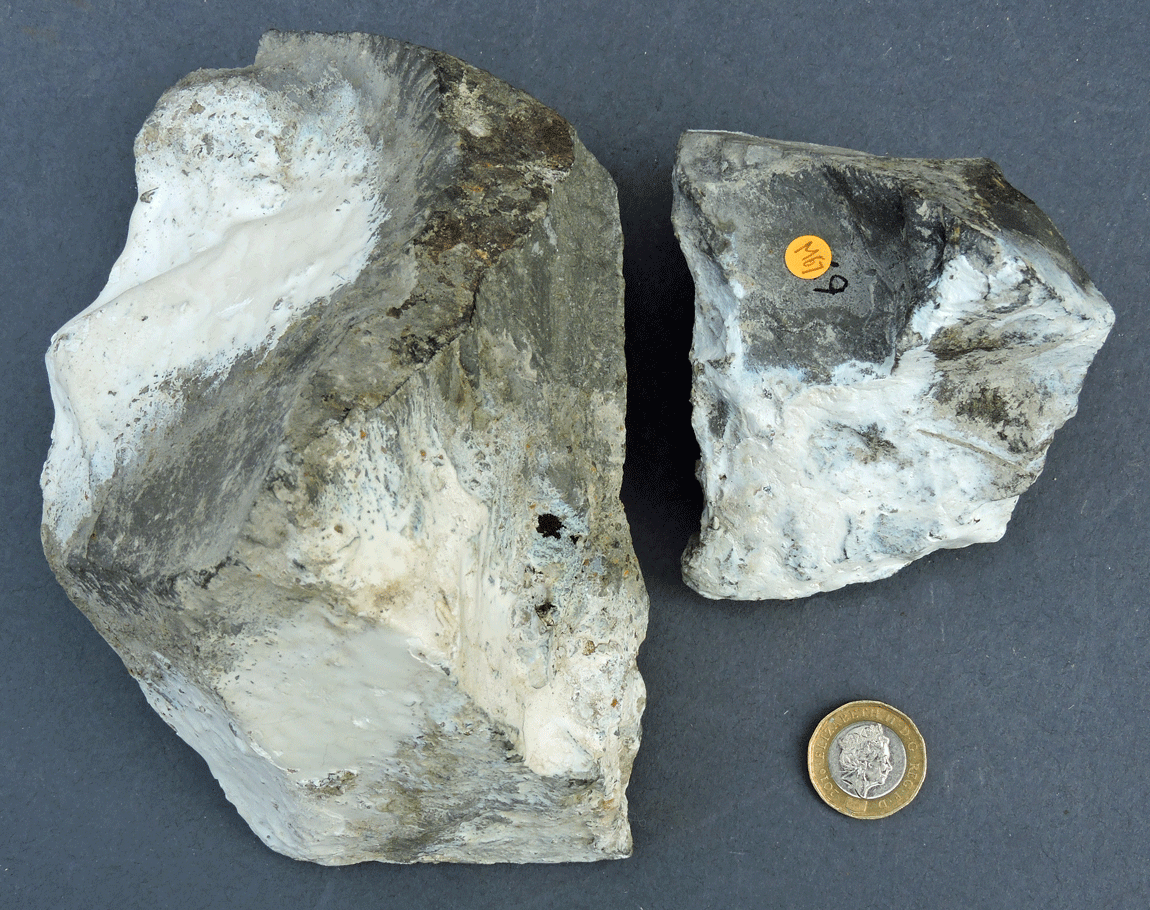
Galena, Pen y Gaer hill, Llanidloes. (CWO)
Galena, Lead sulphide, PbS. Pen y Gaer hill, Llanidloes, Central Wales Orefield. This specimen was obtained from a very small trial, not known as a mine. It is about 80% galena with the rest being quartz. The galena is very finely cleaved and is better observed under a microscope. The quartz is a very fine aggregate intermixed with galena.



